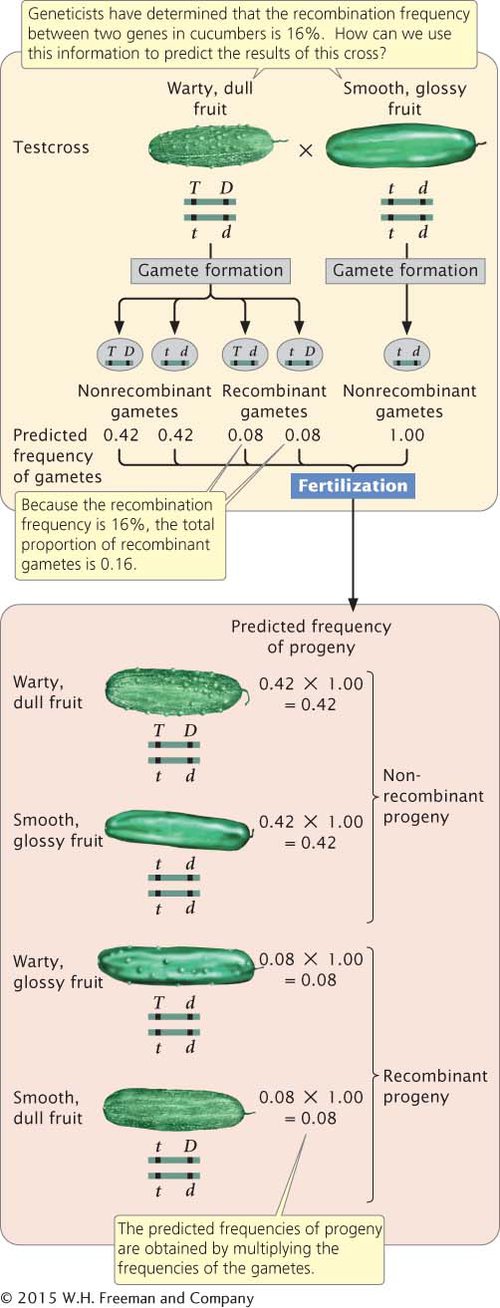Predicting the Outcomes of Crosses with Linked Genes
Knowing the arrangement of alleles on a chromosome allows us to predict the types of progeny that will result from a cross that entails linked genes and to determine which of these types will be the most numerous. Determining the proportions of the types of offspring requires an additional piece of information: the recombination frequency. The recombination frequency provides us with information about how often the alleles in the gametes appear in new combinations and therefore allows us to predict the proportions of offspring phenotypes that will result from a specific cross that entails linked genes.
In cucumbers, smooth fruit (t) is recessive to warty fruit (T) and glossy fruit (d) is recessive to dull fruit (D). Geneticists have determined that these two genes exhibit a recombination frequency of 16%. Suppose that we cross a plant that is homozygous for warty and dull fruit with a plant that is homozygous for smooth and glossy fruit, and then carry out a testcross using the F1:

What types and proportions of progeny will result from this testcross?
Four types of gametes will be produced by the heterozygous parent, as shown in Figure 5.8: two types of nonrecombinant gametes (T D and t d) and two types of recombinant gametes (T d and t D). The recombination frequency tells us that 16% of the gametes produced by the heterozygous parent will be recombinants. Because there are two types of recombinant gametes, each should arise with a frequency of 16%/2 = 8%. This frequency can also be represented as a probability of 0.08. All the other gametes will be nonrecombinants, so they should arise with a frequency of 100% −16% = 84%. Because there are two types of nonrecombinant gametes, each should arise with a frequency of 84%/2 = 42% (or 0.42). The other parent in the testcross is homozygous and therefore produces only a single type of gamete (t d) with a frequency of 100% (or 1.00).

Four types of progeny result from the testcross (see Figure 5.8). The expected proportion of each progeny type can be determined by using the multiplication rule (see Chapter 3), multiplying together the probability of each gamete. For example, testcross progeny with warty and dull fruit

appear with a frequency of 0.42 (the probability of inheriting a gamete with chromosome T D from the heterozygous parent) × 1.00 (the probability of inheriting a gamete with chromosome t d from the recessive parent) = 0.42. The proportions of the other types of F2 progeny can be calculated in a similar manner (see Figure 5.8). This method can be used for predicting the outcome of any cross with linked genes for which the recombination frequency is known.